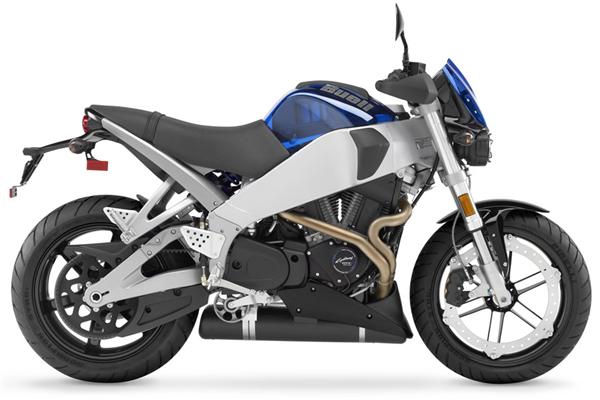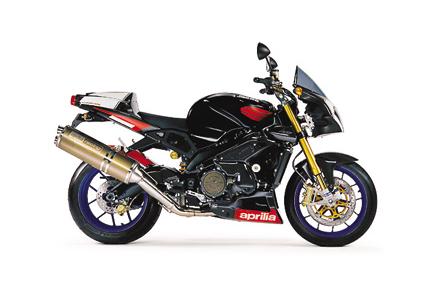Tesi 2D review
In an age when most sportsbikes look very much alike, the Tesi stands apart from the crowd

The Tesi Millennium, formerly known as the LA Vyrus, could easily be written off as a biking novelty, but this oddball is one formidable motorcycle from a manufacturer already known for producing special bikes.
Like most Bimotas, the Tesi uses an engine borrowed from another manufacturer. This time it’s the turn of Ducati’s 1000cc air-cooled motor, the same as in the SS1000 and Multistrada, with the company’s own fuel-injection system fitted. It’s not a bad choice, as the thumpy V-twin not only has good low down power and torque, but also the lack of radiators, water pumps and other extremities more usually found on leading modern engine designs saves weight and helps create a power plant that is as much part of the frame as the rest of the Tesi ethos.
The theory behind the Tesi’s chassis design is that the various forces transmitted through the machine travel low down in the centre of gravity and in very straight lines. Because of this design, the three processes usually handled as one by the front end on more conventional machines – braking, steering and suspension – are treated independently by the Tesi Millennium. This is the sheer beauty of the design, as nothing alters or interferes with its ability to hold the road.
The steering action is unhindered by heavy forks and the impact that any suspension movement has upon it, creating a fast and consistent feeling through the bars. Initially, this feels like a bike with overly stiff forks as the front end refuses to dive under braking, but pretty soon you start to realise the suspension isn’t affected and the bumps and texture of the road surface are still being transmitted up though the bars. Remarkably, nothing gets in the way of the front end’s various duties.
The two red tie rods either side of the front wheel are the torque arms for the brake calipers, while the single rod on the offside handles the steering via the bell crank just below the steering head. Opposite the steering mechanism is the complex looking rising rate front shock set-up, which is fully adjustable.
Despite looking odd, the handling is pretty much faultless. Only low speed U-turns presented any problem whatsoever, due to the limited angle that the wheel can move within the front swing arm. Once on the move, nothing phases the Tesi, which just gets better the faster you go and doesn’t appear to have any limits. If anything, it’s just too good.
Once tipped on its ear, the chassis doesn’t flinch. You can accelerate, shut-off or brake hard – anything – and the composure is unaltered. Because the front isn’t diving with every movement of the bike, the conventional rising rate rear shock is set up completely differently to the norm and performs with a rock steadiness not usually experienced this far away from a race track.
Completely un-streamlined, were it not for the stylish cockpit fairing, the mechanics of the machine are open for all to see. An unnecessarily large diameter tacho on the dash reads out the engine revolutions, while a tiny speedo display attempts to hang onto your licence for you. A series of lights also informs you when to change gear and you can set this as low as tickover, or as high as the redline, should you wish.
The noises that emanate from the Tesi are as unusual as the bike’s distinctive looks. The large, underslung ‘Buellesque’ silencer exits at the front, traditionally the quieter end of a bike, while the airbox is so far forward of the rider that you can’t hear any intake sounds. The Tesi Millennium, formerly known as the LA Vyrus, could easily be written off as a biking novelty, but this oddball is one formidable motorcycle from a manufacturer already known for producing special bikes.
Like most Bimotas, the Tesi uses an engine borrowed from another manufacturer. This time it’s the turn of Ducati’s 1000cc air-cooled motor, the same as in the SS1000 and Multistrada, with the company’s own fuel-injection system fitted. It’s not a bad choice, as the thumpy V-twin not only has good low down power and torque, but also the lack of radiators, water pumps and other extremities more usually found on leading modern engine designs saves weight and helps create a power plant that is as much part of the frame as the rest of the Tesi ethos.
The theory behind the Tesi’s chassis design is that the various forces transmitted through the machine travel low down in the centre of gravity and in very straight lines. Because of this design, the three processes usually handled as one by the front end on more conventional machines – braking, steering and suspension – are treated independently by the Tesi Millennium. This is the sheer beauty of the design, as nothing alters or interferes with its ability to hold the road.
The steering action is unhindered by heavy forks and the impact that any suspension movement has upon it, creating a fast and consistent feeling through the bars. Initially, this feels like a bike with overly stiff forks as the front end refuses to dive under braking, but pretty soon you start to realise the suspension isn’t affected and the bumps and texture of the road surface are still being transmitted up though the bars. Remarkably, nothing gets in the way of the front end’s various duties.
The two red tie rods either side of the front wheel are the torque arms for the brake calipers, while the single rod on the offside handles the steering via the bell crank just below the steering head. Opposite the steering mechanism is the complex looking rising rate front shock set-up, which is fully adjustable.
Despite looking odd, the handling is pretty much faultless. Only low speed U-turns presented any problem whatsoever, due to the limited angle that the wheel can move within the front swing arm. Once on the move, nothing phases the Tesi, which just gets better the faster you go and doesn’t appear to have any limits. If anything, it’s just too good.
Once tipped on its ear, the chassis doesn’t flinch. You can accelerate, shut-off or brake hard – anything – and the composure is unaltered. Because the front isn’t diving with every movement of the bike, the conventional rising rate rear shock is set up completely differently to the norm and performs with a rock steadiness not usually experienced this far away from a race track.
Completely un-streamlined, were it not for the stylish cockpit fairing, the mechanics of the machine are open for all to see. An unnecessarily large diameter tacho on the dash reads out the engine revolutions, while a tiny speedo display attempts to hang onto your licence for you. A series of lights also informs you when to change gear and you can set this as low as tickover, or as high as the redline, should you wish.
The noises that emanate from the Tesi are as unusual as the bike’s distinctive looks. The large, underslung ‘Buellesque’ silencer exits at the front, traditionally the quieter end of a bike, while the airbox is so far forward of the rider that you can’t hear any intake sounds.
| Dryweight (kg) | 149 |
| Seats | 0 |
| Suspension Front | Progressive double system |
| Suspension Rear | Direct double system |
| Adjustability Front | Full |
| Adjustability Rear | Full |
| Brakes Front | 320mm floating double disc |
| Brakes Rear | 210mm single disc |
| Wheelbase (mm) | 1375 |
| Chassis | Double swing arm |
| Cubic Capacity (cc) | 991 |
| Bore (mm) | 94 |
| Stroke (mm) | 71.5 |
| Valve Gear | desm |
| Compression Ratio | 10.1 |
| Cooling | Air |
| Fuel Delivery | EFI Euro1 |
| Stroke Type | Four Stroke |

